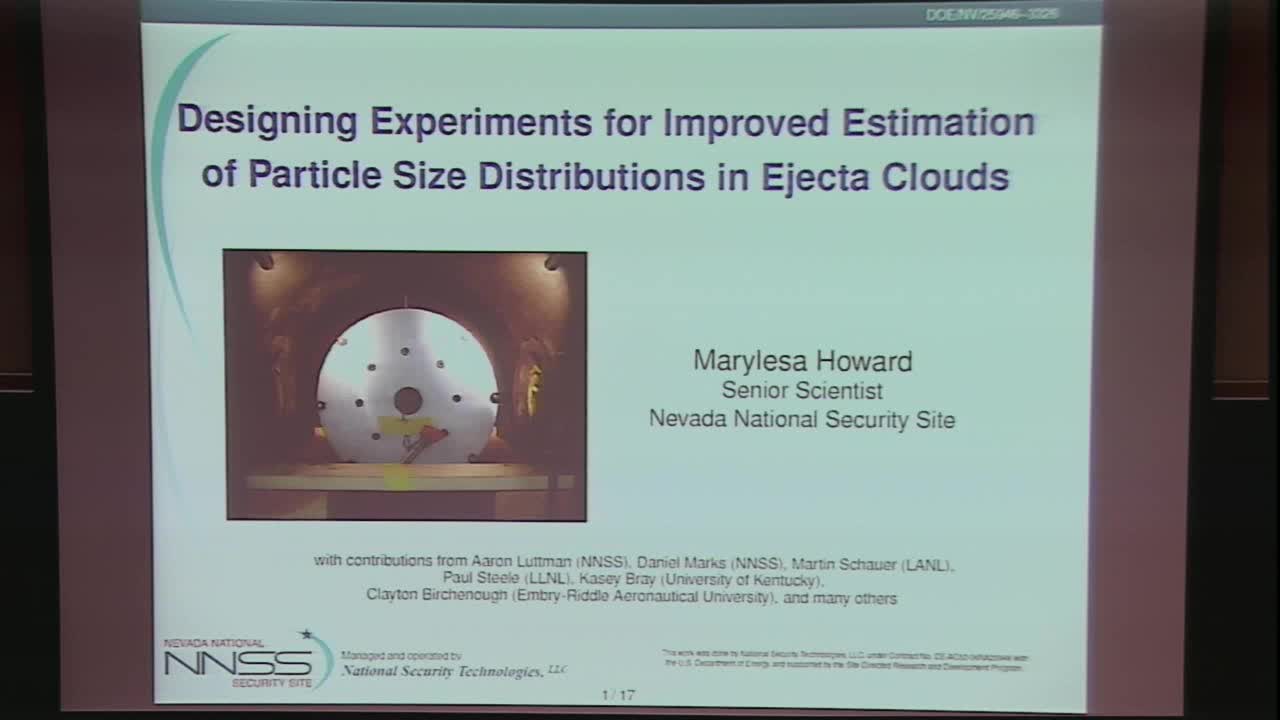Designing Experiments for Improved Estimation of Particle Size Distributions in Ejecta Clouds
Presenter
September 7, 2017
Keywords:
- Parameter Selection, Experiment Design, ill-posed linear inverse problem, Mie scatter theory
Abstract
In dynamic material experiments where metal surfaces receive an extreme shock loading, it is often of interest to understand the size distribution of particles ejected from its surface. Mie scattering theory, a closed-form solution to Maxwell’s equations under assumptions such as spherical particles, suggests we can determine the ejecta size distribution by relating it to measured laser light scattered off the particles and collected at different angles. The experimental setup requires the selections of laser wavelength and angles for the placement of detectors, but to optimize such parameters requires an understanding of, and exploiting the characteristics of, the Mie scatter model. In this work we will present some of the details of the Mie model for ejecta size calculations, as well our approach to characterizing and optimizing sensor positions. Examples of real data taken at Department of Energy facilities will also be presented, along with associated challenges of
analyzing real data.
Co-authors: Aaron Luttman, Nevada National Security Site
Dan Marks, Nevada National Security Site
Clayton Birchenough, Embry-Riddle Aeronautical University
Kasey Bray, University of Kentucky
Martin Schauer, Los Alamos National Laboratory
Paul Steele, Lawrence Livermore National Laboratory
